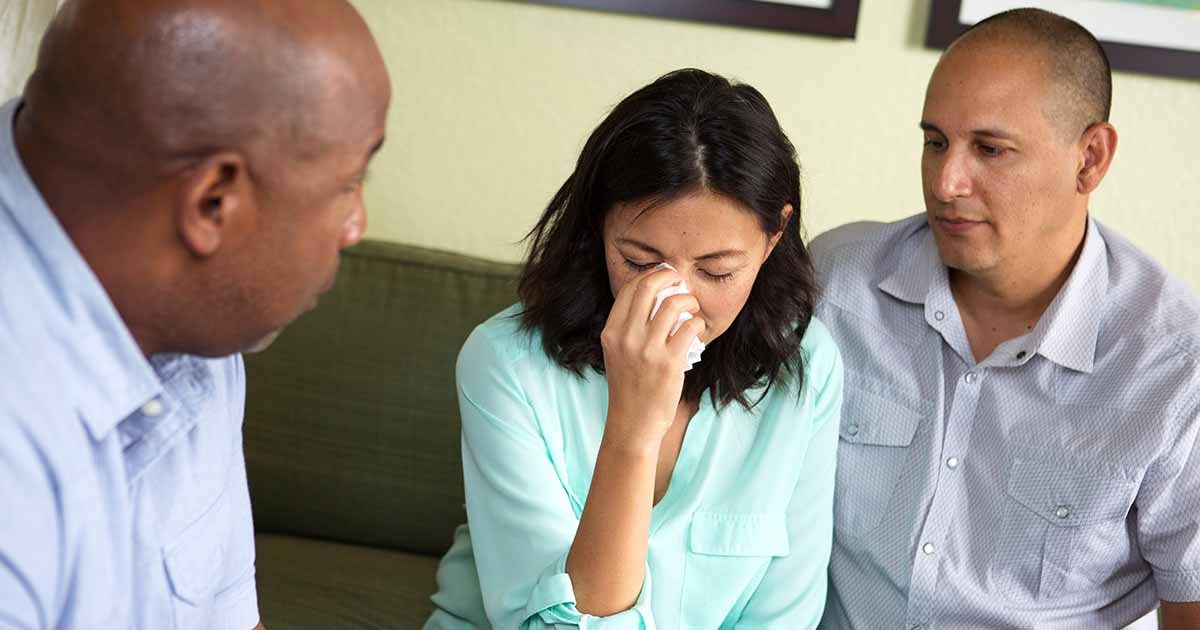Diagnosing Depression

What are the signs and symptoms of depression?
Thoughts and Feelings
- Feeling sad, empty, hopeless, or pessimistic
- Anger or irritable
- Feeling guilty or worthless
- Feelings of guilt or worthlessness
- Mood swings
- Difficulty concentrating
- Trouble making a decision
- Thoughts of death or dying
- Thoughts of suicide
Physical
- Eating too much or too little
- Changes in weight
- Trouble falling asleep or staying asleep
- Sleeping a lot
- Tired a lot or low energy
- Fidgety
- Vague aches and pains
Behavior
- Loss of interest in activities or hobbies
- Withdrawing or isolating from others
- Increasing use of alcohol or drugs
- Not taking care of oneself
- Making plans to die by suicide or other ways to die
What other life circumstances increase my risk for depression?
Some life circumstances can make a person more likely to develop serious depression and even consider suicide. These high-risk factors include the following:
- Family history of depression or suicide
- Lack of social support and sense of isolation
- History of trauma or abuse
- Some physical illnesses or medications
- Major life changes such as relationship, job, or financial loss
- Lack of healthcare, especially mental health and substance abuse treatment
- Previous history of depression, hospitalization, or attempted suicide
- Exposure to others who are depressed or have died by suicide
- Easy access to lethal means
- Mental disorders, particularly mood disorders, schizophrenia, anxiety disorders, and certain personality disorders
- Alcohol and substance abuse
- Cultural and religious beliefs
Remember that depression changes a person’s ability to function in their daily activities at work, school, or home. It affects all their relationships and how they feel, think, and act. Often others notice a person’s depressed mood or behavior first. Because depression can create an “emotional fog,” it may be difficult for the person who is depressed to fully understand how much their behavior affects those around them.
Sometimes age is a factor in how common symptoms appear. For children, sadness and irritability are most common. For older adults, physical symptoms, loss of energy, and loss of interest are typical concerns.
Diagnosing Depression
First, health care providers need to determine if some other condition is present that may be the cause of the symptoms or occur at the same time. For example,
- A child with disruptive mood dysregulation disorder may also have attention-deficit/hyperactivity disorder or oppositional defiant disorder.
- Someone dealing with a death of a loved one may seem depressed, but their emotional state (waves of sadness) is related to reminders of their deceased loved one and may be considered normal.
- If their grief does not improve over time, and the depression doesn’t go away and is not related to specific thoughts or loss memories, this may be a sign that they have an underlying depression.
A thorough psychological assessment will clarify the primary or main diagnosis and rule out other possible conditions. The assessment may include the following:
- Interviews with a mental health provider (for children including parents)
- Assessment of physical, psychological, and social issues including family history
- Self-reported measures and rating scales of behavior by other people
- Psychological tests
- A physical examination and developmental screening to rule out any medical conditions that might produce psychological symptoms
- Review of prior medical records
- Testing of intelligence and cognitive function, educational achievement, and screening for learning disabilities
- Other tests as needed to check vision, hearing, speech, and language
- Behavioral observations in natural and clinical settings
- Review of school or work records
- Sometimes blood work to rule out general medical conditions that can affect mood
What about depression and suicide?
Serious or prolonged depression can lead to suicide. The World Health Organization reports that every 40 seconds, someone dies by suicide and over 800,000 people die by suicide every year.
Reports of suicidal thoughts and suicide are also higher in adults with epilepsy than in adults without epilepsy. For example 25% or 1 out of 4 adults with epilepsy report suicidal ideation, while only 13% without epilepsy report this.
Suicide is a major health concern and one that should be evaluated for anyone who has symptoms of depression. Fortunately, depression is treatable and suicide is preventable.
Resources
Epilepsy Centers
Epilepsy centers provide you with a team of specialists to help you diagnose your epilepsy and explore treatment options.
Epilepsy Medication
Find in-depth information on anti-seizure medications so you know what to ask your doctor.
Epilepsy and Seizures 24/7 Helpline
Call our Epilepsy and Seizures 24/7 Helpline and talk with an epilepsy information specialist or submit a question online.
Tools & Resources
Get information, tips, and more to help you manage your epilepsy.



